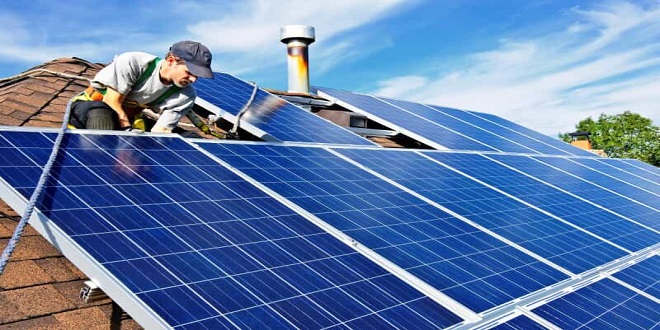How to Replace a Roof with Solar Panels

Before you replace a roof, consider the size and slope of your roof. Solar panels could prove to be more efficient if your roof is smaller or sloped. Solar panels are becoming a more popular alternative to traditional roofs. These roofs are becoming more popular in modern times.
Overview of roofs and rooftops
Roofs are an important part of a building’s exterior. They protect it from the elements and allow ventilation. Solar panels can be used to replace a roof and increase efficiency by reducing the home’s energy use.
When choosing a roof for solar panel installation, there are many things to consider.
-The location: Solar panels work best on rooftops that get direct sunlight all day.
-The climate: Solar panels work best in moderate temperatures with little snow or rain.
-The type of roof: Metal, slate or shingles roofs require different mounting systems to those made from asphalt, tile or fiberglass.
The budget: Although a rooftop installation may be costly, it can help reduce your home’s energy bills.
Choosing a Roof Material
When replacing a roof with solar panel panels, roofing material is an important decision. The type of roofing material and insulation used will impact the heat loss at night and how much heat is trapped in the panels.
Insulation is the most important aspect of choosing a roofing material to cover solar panels. Good insulation roofing materials will trap heat throughout the day. This will prevent it from escaping through tiles or shingles, which can cause higher energy bills. Fiberglass, cellulose and foam insulation are some of the most effective insulating materials.
Shade: Shading is another important aspect to consider when selecting a roofing material for your solar panels. Because solar panels are more efficient when shaded during the day, they can be used less energy. Choose a roofing material that provides adequate shade for solar panels if your home is covered by trees and other vegetation.
Material: There are many options for roofing materials. It is important to choose the one that best matches your home’s style. Metal, slate, concrete tile and clay tiles are some of the most popular roof materials.
Calculating Solar Panel Size
There are a few things you need to consider before you install solar panels on your roof. In determining how much power the panels will produce, it is important to consider the size and shape of your roof.
Solar panels aren’t always the same size. It all depends on your needs and preferences. If you are looking to use standard sizes of solar panels, such as 200W and 600W, a rule of thumb is to multiply your wattage by 1.5. Higher wattage ratings are required for larger panels or panels that are more powerful. To track the sun’s power, you can also use Dual-axis solar tracker.
Measure the width and length of your roof to determine its size. Divide that number by four to find the average width. This is how many square feet each panel covers. That’s how many panels are needed. Multiply this number by the amount of wattage required to cover the desired area.
Roof Solar Panels: The Pros and Cons
There are pros and cons to both roof solar panels. The roof can be fitted with solar panels, which can offer a variety of benefits including reduced energy consumption and lower emissions.
However, solar panels can cause damage to your roof and could be a problem for pests or weather.
It is up to you to decide whether or not solar panels are installed on your roof. Understanding the pros and cons of each option will help you make an educated decision. This is the reason why solar power systems are so costly.
How do you install solar panels on your roof.
You will need to do a few things in order to put solar panels on your roof. First, you need to apply for permits from your municipality or utility company. Also, you will need estimates for labor and materials. Once you have this information, you can begin planning your installation.
Solar panels need direct sunlight to produce power. If your home is located in strong shadows or blocks the sun, solar panels may not work. The panels may also fail prematurely if they are not properly ventilated or insulated.
After you’ve sorted all the details, it’s time for installation! First, use a level to mark where the panels will be installed. Next, drill a bit big enough to hold the screws. You should ensure that the screws are sized to your roofing material. Too small screws can cause damage later when you remove the panel.
Next, attach the brackets to the corners of each panel with screws and washers. These brackets should be large enough to withstand the panel’s weight without breaking or bending. After everything has been assembled, seal any gaps with silicon sealant and rescrew everything.
The solar panels can be installed using the same screws as the brackets. Each panel should be securely attached to the brackets. There should also not be any gaps between them. This will prevent sunlight from entering the panels and generating power.




